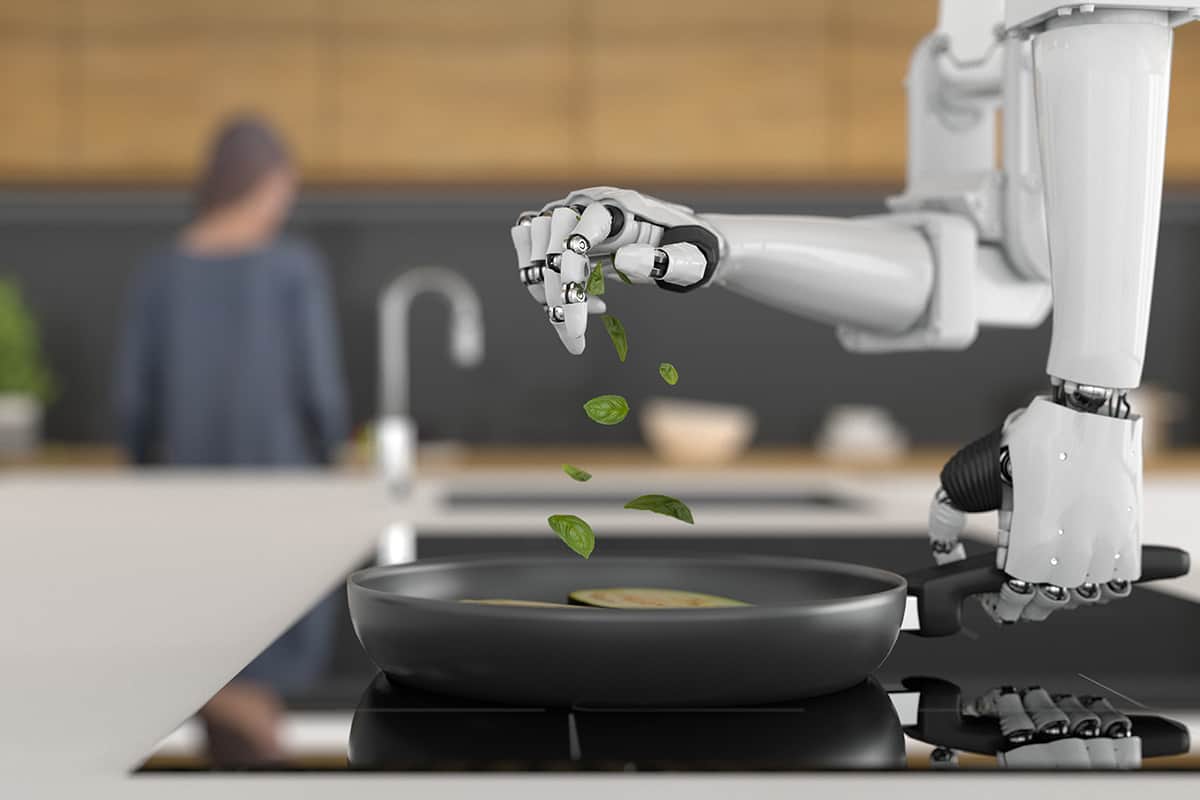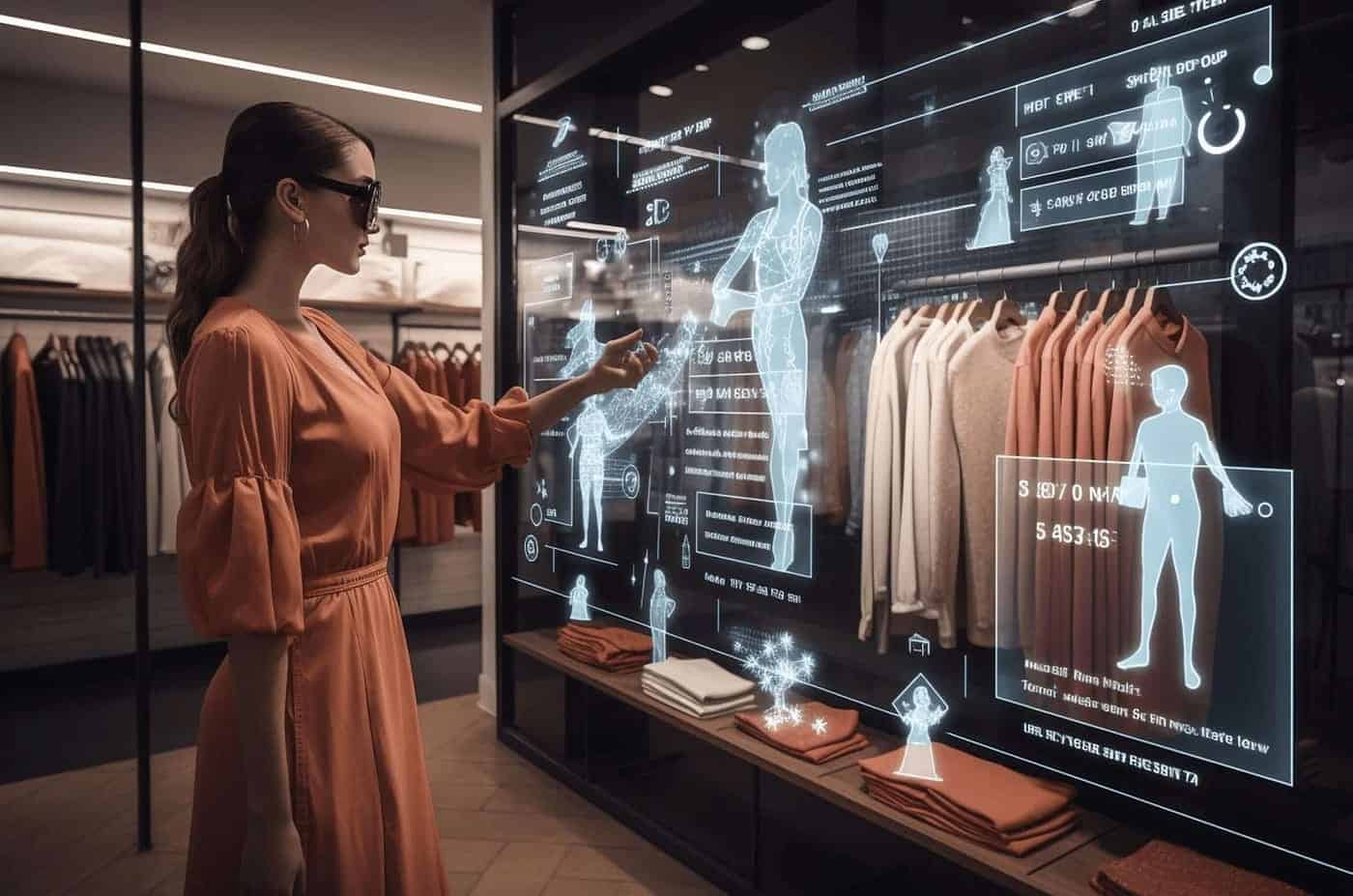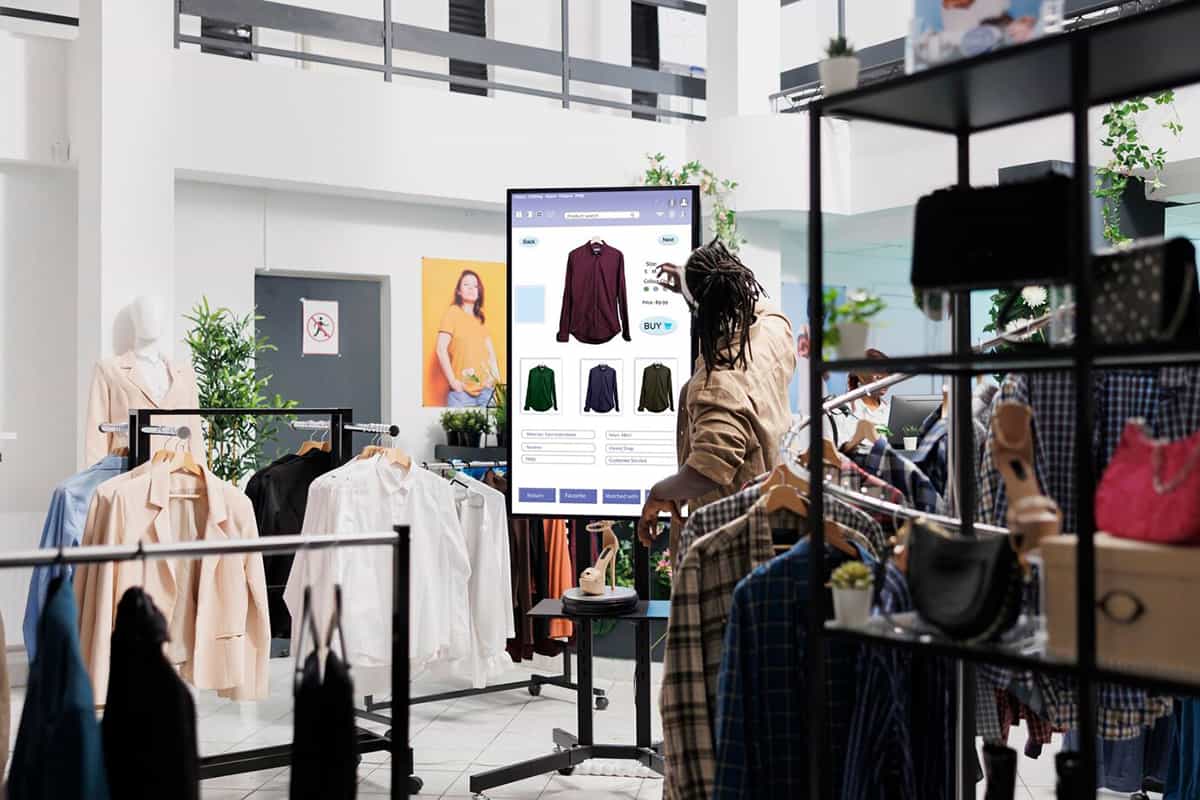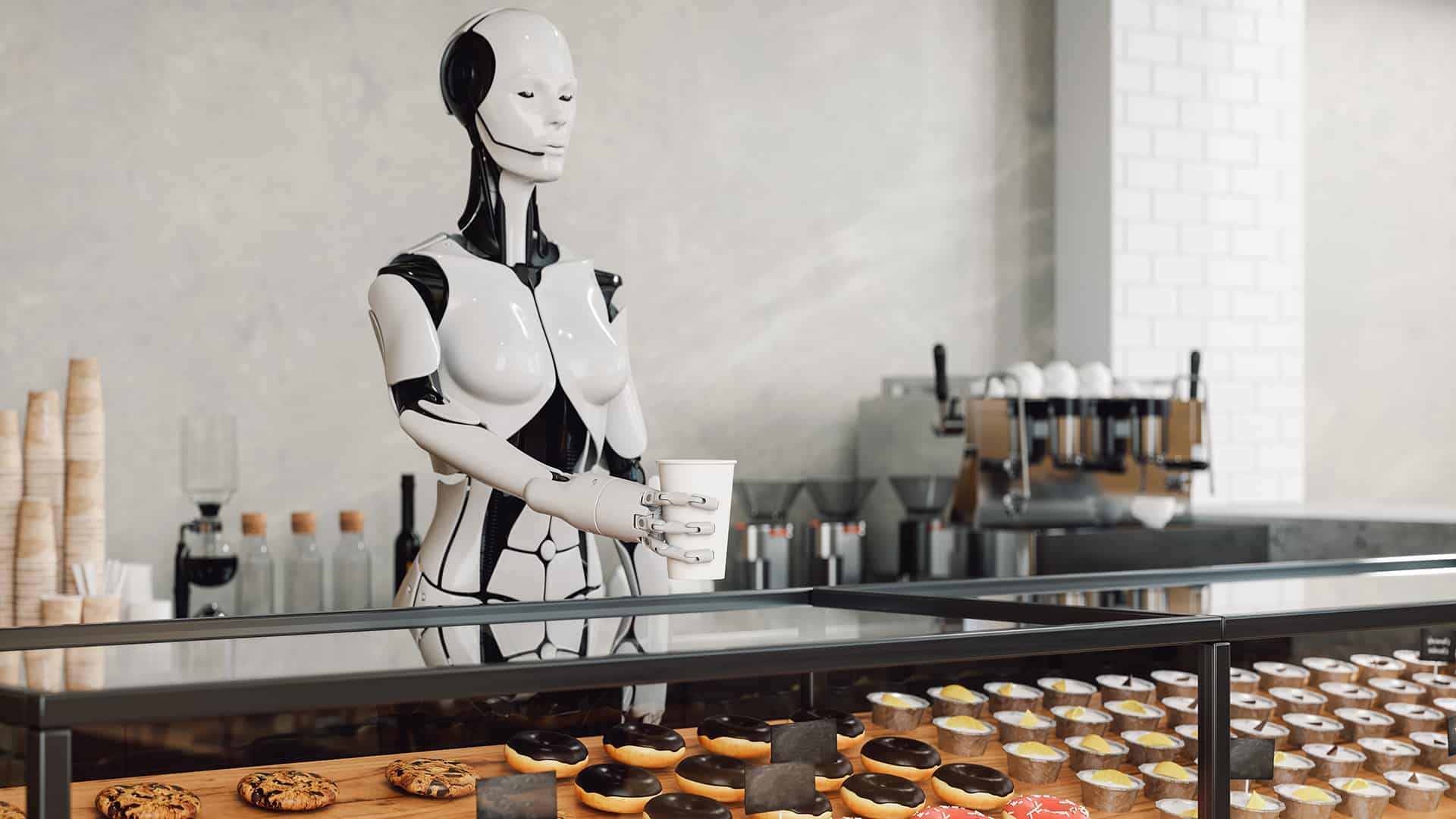In a world of abundance, experience has become an increasingly important currency for retail brands looking to distinguish themselves. Our cravings for human interaction, brand engagement, and sensory experiences may appear to contradict our fascination and dependence on technology. However, with the advent of sophisticated artificial intelligence (AI) technologies, we stand to experience an accelerant poised to catapult the retail industry forward. How can retailers embrace this technology to remain relevant in this next era?
One of the primary drivers for many consumers choosing to shop in stores rather than online is interaction—the ability to connect with knowledgeable store associates, to touch, feel, and experience the brand with others. However, what happens when the customer becomes more knowledgeable than the store associate in an industry struggling to attract and train qualified employees? What role can store design play in making associates and customers feel safe, seen, and valued?
Many businesses are turning to technology for solutions to these questions—from self-service kiosks and AI-powered customer service systems to chatbots that deliver service at scale—but the cost-benefit of a brick-and-mortar presence is still called into question.
As with any design problem or technology, it’s crucial to grasp the problem at hand to figure out the most suitable AI tools to adopt. These tools are widely available and growing fast, with their influence becoming more powerful and disruptive, creating a divide between those who embrace AI and those who ignore it.
Historical trends point to AI becoming more catalytic and explosive than the discovery of fire, farming, or electricity. On the upside, AI holds the potential to create an opportunity where human jobs become more focused on creative endeavors, releasing us from the repetitive day-to-day tasks that can easily be automated.
According to a survey of 119 CEOs at the Yale CEO Summit, 42% of CEOs believe AI has the potential to destroy humanity in 5-10 years. However, it also has the potential to bring peace, solve hunger, save the planet, and cure cancer. Right now, we are afraid because, as Yuval Noah Harari, author of Sapiens, puts it, “It’s the first time in history that nobody has any idea what the world will look like in 10 years.”
Understandably, we all are a little uneasy. For years, we’ve felt in control of our decisions, reading magazines that we identify with and trusting editors or brands to curate the stores where we shop. Why does this AI make us feel so different? Isn’t it here to help us and to make our experience more frictionless?
Perhaps the absence of humanity is making us distrustful of decisions being made on our behalf. The filter bubble—a term for how algorithmic bias leads us to experience only products, services, and information based on our prior choices—intentionally narrows our choices, perspectives, and understanding.
While Accenture reports that 83% of consumers are willing to share data to receive personalized experiences, data security is a significant barrier in technology and AI adoption. According to Katharina Koerner at iapp, one solution may be homomorphic encryption, a groundbreaking cryptographic technique enabling third parties to process information without revealing the data itself by running computations on encrypted data.
While homomorphic encryption seems reassuring—after all, our data stays safe, we can still receive personalized suggestions and easily access products quickly—it doesn’t allow room for customers to encounter “positive” friction. Consumers delight in the chance of the unexpected as it appeals to our innate curiosity and desire for discovery. The physical store lets us take control of our customer experience and enjoy a journey that might otherwise never be replicated, particularly if enhanced by relevant technology.
AI is like a GPS that promises the fastest route to a destination, but sometimes the unexpected detours are what create lasting memories and a genuine connection with a place.”
– Adi Floyd, Futurist at Trend Hunter
LEISURE AND ENTERTAINMENT
Ushering in an unprecedented degree of immersion to live experiences, the future of AI is all about blurring the lines between audience and performer—with retail outlets providing the perfect stage for AI to help choreograph increasingly unique experiences.
We’ve seen several concepts leading to this point, from the relatively analog yet highly Instagrammable sensation Museum of Ice Cream to the digitally immersive ArtecHouse. However, audiences of the future are no longer looking for passive experiences. They wish to be challenged and walk away with their own unique experience.
Immersive, Transformational Experiences
Where and how we come together should be less about the transaction (which can be easily replicated online) and far more transformative. It’s an opportunity to design for collective effervescence, which describes the energy when people come together for transformative experiences that create lifelong transcendent memories. U2’s concert at the highly immersive Sphere in Las Vegas and wristbands worn at other shows, including Taylor Swift’s Eras Tour, are great examples of this tribal, post-pandemic entertainment that is fueled by AI, where fans feel connected to one another through immersive soundscapes or wearable technology. K-pop groups are launching branded NFTs and digital experiences for fans. Esports teams and organizations have begun opening physical facilities globally for players to hone their skills, participate in live events, explore wellness practices, and produce in-house content.

In stark contrast to this, but no less relevant, is Darkfield in Scotland. At the forefront of technology and theatre, the concept is centered on shipping container sets shrouded in complete darkness. The enhanced binaural audio immersion technology provides the audience with a lost sense of self that is both highly personal and potentially disturbing to the senses. Performances include “Flight,” where participants experience a simulation of a passenger plane, and “Eulogy,” an immersive afterlife experience of being in a morgue.
Dark, indeed. But effective and richly experiential beyond passive digital experiences. Such experiences may have future applications to retail and other sectors as shoppers look to more entertaining, disruptively hybrid spaces to share.
FOOD RETAIL
According to Forbes, 91% of us hate being forced to download apps to engage with a brand or in-store experiences, yet 80% of diners prefer restaurants with technology experiences? It suggests that AI technology can play an increasingly important role in improving the efficiency of our dining experiences. It is a tool for enhancing our natural human senses, not a replacement. It can tell us what ingredients are used and understand individual likes and dislikes for more meaningful human engagement.

Recent statistics shared at the Future Festival reveal that 8 out of 10 meals are sourced from home, with 25% of consumers planning to cook more this year and 62% believing technology helps hone their culinary skills. Kroger’s ChefBot is just one example of how technology drives solutions in the food industry. The smart recipe bot uses visual AI to analyze a photo of the ingredients a user has on hand and then provides recipe options utilizing those ingredients—ultimately reducing food waste and saving time for the consumer.
FASHION RETAIL
Toronto-based fashion retailer Gotstyle experiments and embraces technology while recognizing the importance of personalized assistance for its customers. Consumers work with stylists to scan clothes (what they have purchased and items from their existing wardrobes) into the soon-to-be-released app for AI-enabled daily wardrobe recommendations. Outfit suggestions are shown dressed on the consumer and fueled by personal preferences and potential activities for the day ahead.

The brand’s out-of-store interaction extends to associates engaging with customers on regular TikTok previews and virtual “live” shopping events. These experiences are balanced by a robust in-store event and activation program. From the Groom Room to a Pool Room offering complimentary snacks and drinks, the store boasts several activation areas for hosting elaborate and unique events like themed dinners, tastings, and pairing parties. Their community reach is so strong customers often feel like they know the stylists—even as they first enter the store.
Furthermore, Gotstyle’s upcoming resale program will offer credits toward future purchases for returned clothing, incentivizing shoppers to update their wardrobe more sustainably. The concept is simple—purchase clothes at Gotstyle and, after wearing them, return items to the store in exchange for a gift card.
ADDRESSING RETAIL INDUSTRY CHALLENGES
Finding experienced retail associates and attracting new talent becomes more challenging every year, exacerbated by the news of the industry’s “normalization” of theft. To attract team members, brands are now focusing more on the back-of-house areas, the safety and wellness of their team, and technologies that help fill this talent vacuum while maintaining a human connection to their customers.

As a result, stores are turning to 3D virtual avatars controlled by real people. This fulfills consumers’ desire for interaction with a genuine retail representative while easing the burden on workers. Examples of this approach include Tokyo’s Green Lawson, an avatar-staffed convenience store, and Freshii, a Canadian fast-food franchise testing a virtual cashier system connected to call centers. Now open in Naperville, IL, Sweetgreen is piloting automation at a new restaurant that leverages technology to serve customers fresh, healthy food while providing a more human experience.
IN SUMMARY
The adoption of AI is pervasive and will rapidly secure it as an emergent technology that will be assimilated into our daily lives—becoming an almost invisible and indistinguishable force for humankind. As with any change, however, many feel threatened by its emergence. But, if anything, the COVID-19 pandemic re-shuffled our priorities and attitudes towards technology and arguably prepared us for whatever chaos may lie ahead. Having moved from an “infection” point in history only 36 months ago to today’s “inflection” point, AI should be viewed as an accelerant. As such, we must ask ourselves: What do we want to do less? What will become commoditized? What would be a more valuable use of our time and talents? How can AI be harnessed for the good of humankind?
Sources: Author’s opinions blended with insights from Trend Hunter’s 2024 Report, content presented at the Future Festival in Toronto, and edited using Chat GPT 3.5.

